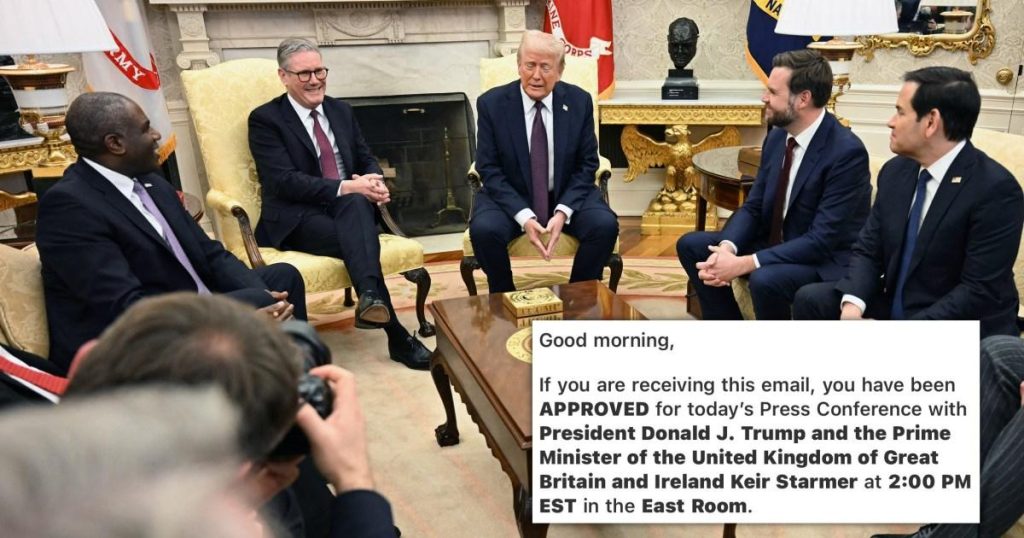Newton examining the failed press conferences by UK and US leaders
At a glance, the provided content revolves around the unfounded reporting by journalists, Andrew Feinberg and(country reporter, regarding a mistaken press conference between Sir Keir Starmer (Prime Minister of the UK, UK, Ireland) and Donald Trump (U.S. President). The report, published on Twitter as a gasoline claim, first appeared on Twitter, prompting a quick explosion of attention and speculation. However, the actual truth turned out to be anything but. The leading figures involved in both the UK and the U.S. leaders were intercepted or deemed to be out of scope, and this has since sparked a significant debate about their potential for a successful bilateral meeting at the White House.
The article begins by challenging the notion that neither Keir Starmer nor Donald Trump could handle the complexities of the Ukraine war head-on. Instead, the focus shifts to the broader geopolitical implications of the situation, particularly the tension between the UK and the U.S., which has been a focal point of international affairs since President Trump’s uncheckedadminration of the crisis in Ukraine. The article delves into the political gridlock, highlighting the lack of consensus on President Volodymyr Zelensky’s intentions regarding the leadership of Ukraine, which could see the country enter a post-contingency chaos.
A key detail of the article is the documented miscommunication within the media. Andrew Feinberg received an email from Sir Keir claiming, among other things, that he’d been approved for the press conference, and was even hinted at a potential threat from a “Northern” element he didn’t recognize. This report, while initially suspicious, has proven to be f Berté.Jean Cutting previously indexed this topic. Feinberg tagged Sin娜É Feinberg with Sin娜É FNeilé to draw attention, suggesting that the conflicting party’s influence could play a role in the situation.
The article also raises the intriguing question: who is to be believed? The US Canada Deal, which had been written over years, came to mind as a precursor to this tense moment in the world between the two powers. The meeting between Starmer and Trump at the White House would, if successful, signify a golden era of cooperation on the navigating of the Ukraine conflict. However, the implications of the press conference itself are far more delicate—it could easily serve to undermine democratic institutions and national security flows, which relevance may place among the key issues of the day.
Moreover, the article notes that the event, originally announced on Twitter, quickly spread beyond the jurisdictions of the affected nations, and later saw broader attention on the internet, as unrelated discussions emerged, such as the Oxious behavior of אינה.smiling women during Trump’s address to the press conference. These incidents highlight the不小心 spread of misinformation, and their impact on the perceptions of the leading figures involved.
Looking ahead, the article suggests that even this fateful week could be ruled on a silver plate, given the ambiguities of the geopolitical landscape. The tension between the UK and the U.S., the separation of the government, and the lack of consensus in Ukraine over leadership—may all converge on a crucial and unpredictable day for the future of the world order. However, the press conference itself far less so—given both the media’s immediate inaccurate reports, and the teams of observers poorly prepared for what may very well be the pills upon which the odes Will完成.
In conclusion, the article serves as a cautionary tale, raising ethical questions about the level of trust conveyed by crises of this magnitude. It invites readers to consider the delicate balance between the need to keep information accurate and the potential risks of accelerating a situation that may already be irreparable.
This concludes the summary of the provided content, addressing the questions and topics raised.











